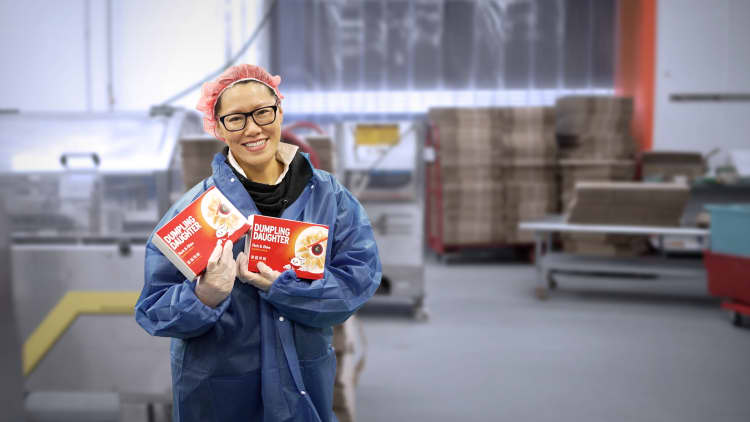
Children need a certain level of self-confidence to grow into happy, prosperous adults.
Confidence is a key indicator of future success, research showsas children and adults are more likely to proactive person When they believe their skills and efforts can lead to positive results.
Unfortunately, the best way to boost your child’s self-confidence isn’t always obvious to parents.This is especially true for parents of young girls, who are more likely than boys to suffer Confidence issue.
One reason: Young girls often face greater pressure to be perfect than boys – and are more likely to combat the fear of failure weaken their confidence therefore.
More than three in five girls said they felt social pressure to be perfect, with most blaming specific language they heard directly from parents and other authority figures.This is based on a recent surveys Commissioned by the LEGO Group toy company, 61,500 parents and children aged 5 to 12 took part in the event. More than half of the children surveyed in the LEGO group study said they thought adults were more willing to listen to boys’ ideas than girls.
Nurturing children’s creativity gives them the freedom to take risks and try new ideas, greatly increasing their self-confidence. This can help build another trait that psychologists often associate with future success: resilience.
“When children fear failure, it can hinder their willingness to explore and think outside the box. This affects the critical skill of creative confidence—skills that can carry over into adulthood,” says Jennifer, a Harvard-trained journalist and parenting researcher. Jennifer Breheny Wallace said.
Wallace says boosting your child’s confidence and creativity can be as simple as rethinking your word choice or even the way you praise your child. Here are four tips she offers parents to ensure they raise highly confident girls.
Don’t harp on perfection; instead praise the process
This is especially true for creative projects, since success can be subjective anyway. Try applauding certain elements—”I love the colors you chose!”—and always remember to praise the process rather than the outcome, adds Wallace.
Child psychologist Francyne Zeltser says praising a child’s effort—how hard they worked on a project or the extra time they spent studying for a test—sends the message that perfect results aren’t the only thing that matters. It can help your child stay motivated to continue working hard in the future, even if their previous efforts produced some shortcomings.
Celebrate setbacks by adopting a growth mindset
Teaching all children to view mistakes and setbacks as learning opportunities, rather than feeling shame about failure, helps them maintain their confidence and motivation to keep trying in the future. Research shows that children who have the strength and confidence to take necessary risks are more likely to try to overcome the obstacles they will face and be more successful in the long run. Psychologists such as Michel Borba.
Wallace recommends being open with your kids and sharing examples of past mistakes you’ve made and how you learned from them.
“Having a growth mindset means believing that you can get better at things by working hard and never giving up, rather than thinking that you are born with certain skills,” she said. “When kids have this mindset, They are more likely to bounce back from difficult times, enjoy learning new things, and be willing to try new things, even if it’s tricky.”
Pay attention to word choice
Wallace cautioned parents to “be aware of gender stereotypes” when describing their children’s thoughts, especially when it comes to young girls and creative projects.
“We all fall into this trap,” she said. “Language bias can Reinforce stereotypes By associating certain qualities, behaviors, or career choices with a specific gender. “
There doesn’t seem to be any harm in using “beautiful” or “cute” to describe what your daughter draws. But the LEGO Group’s survey found that words like this were more likely to be used to describe young girls’ output, while words like “cool,” “bold” and even “genius” were almost as likely to be used to describe young girls. Twice as many as girls. Describe the work of boys and men.
These types of gender stereotypes may steer young girls toward or away from specific interests early on, and may even impact gender diversity in creative and STEM-related industries. According to the National Science Foundation.
Introducing inspiring role models
Wallace noted that parents can encourage their children to openly discuss and challenge existing gender stereotypes.In doing so, help point out inspiring role models who can “ignite their creativity and boost their confidence,” including famous figures Women are succeeding in typically male-dominated industries, from Academy Award nominee Greta Gerwig to female tech executives.
Wallace points out that a role model can also be a friend or family member—anyone “whose accomplishments serve as a powerful reminder that we are all capable of great things.”
Model the type of behavior you want your child to behave. This could mean having conversations while playing with them that can boost their creative confidence, such as discussing what you like best about the game you’re playing, or what inspired them to draw a particular picture.
“Children learn best by observing adults in action,” Wallace said.
Want to make some extra money outside of your day job? register CNBC’s New Online Course How to Earn Passive Income Online Learn about common passive income streams, tips for getting started, and real-life success stories. Sign up now and save 50% using discount code EARLYBIRD.
add, Subscribe to the CNBC Make It Newsletter Get tips and tricks for success in work, money, and life.






